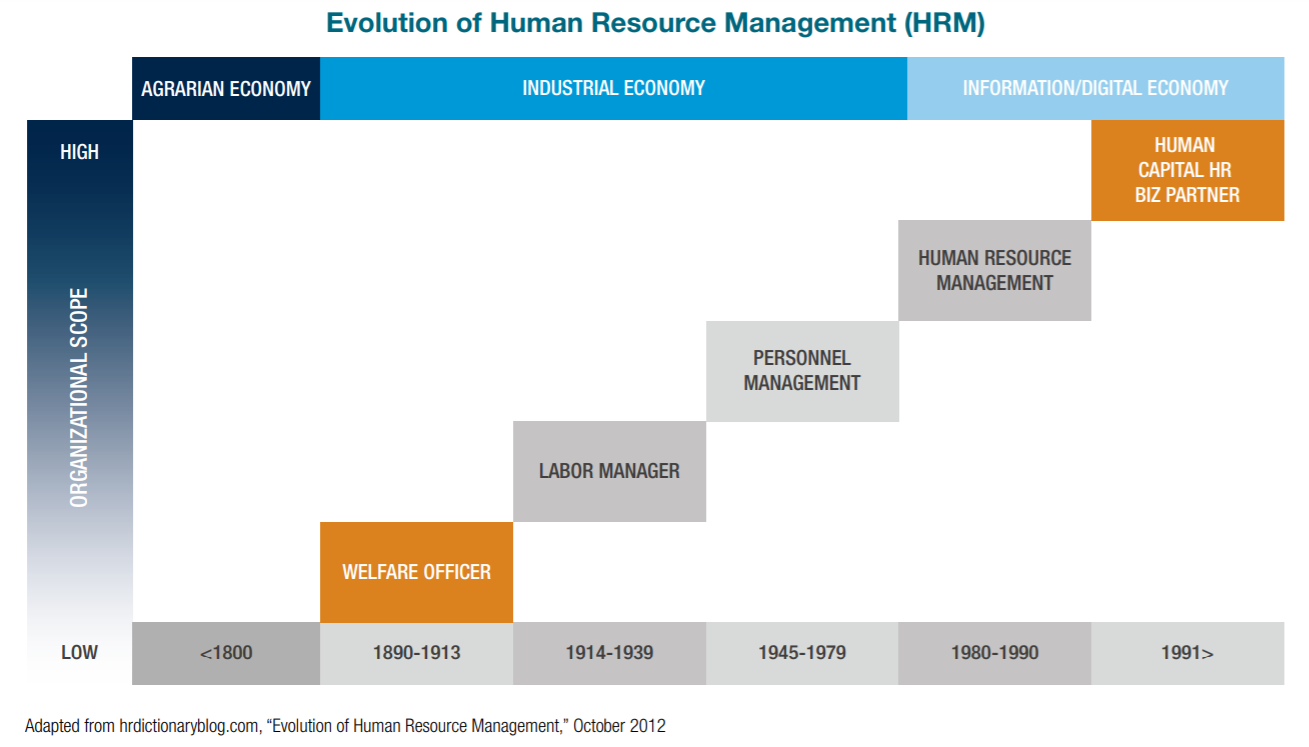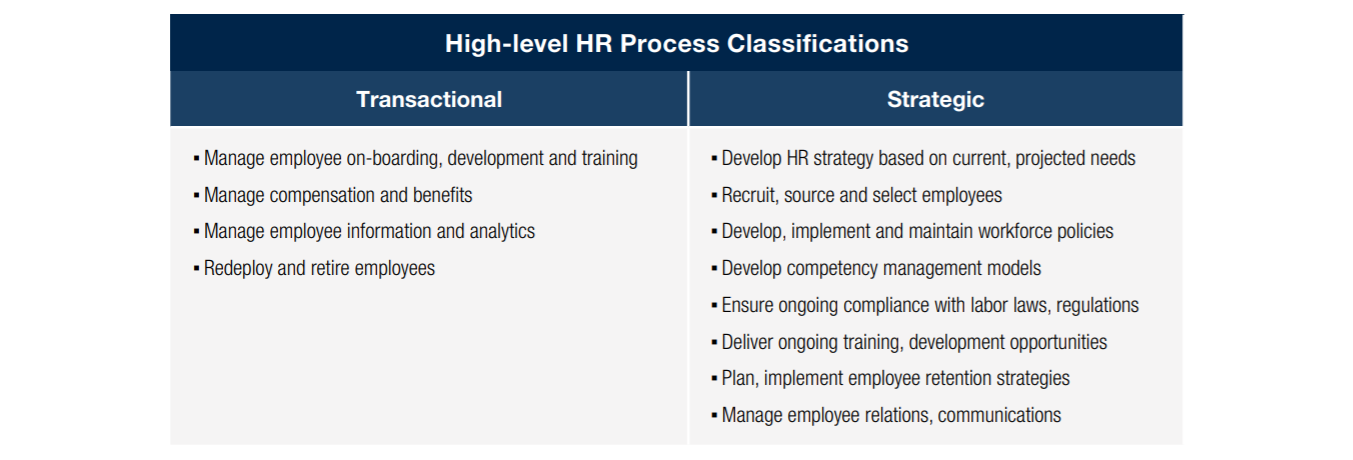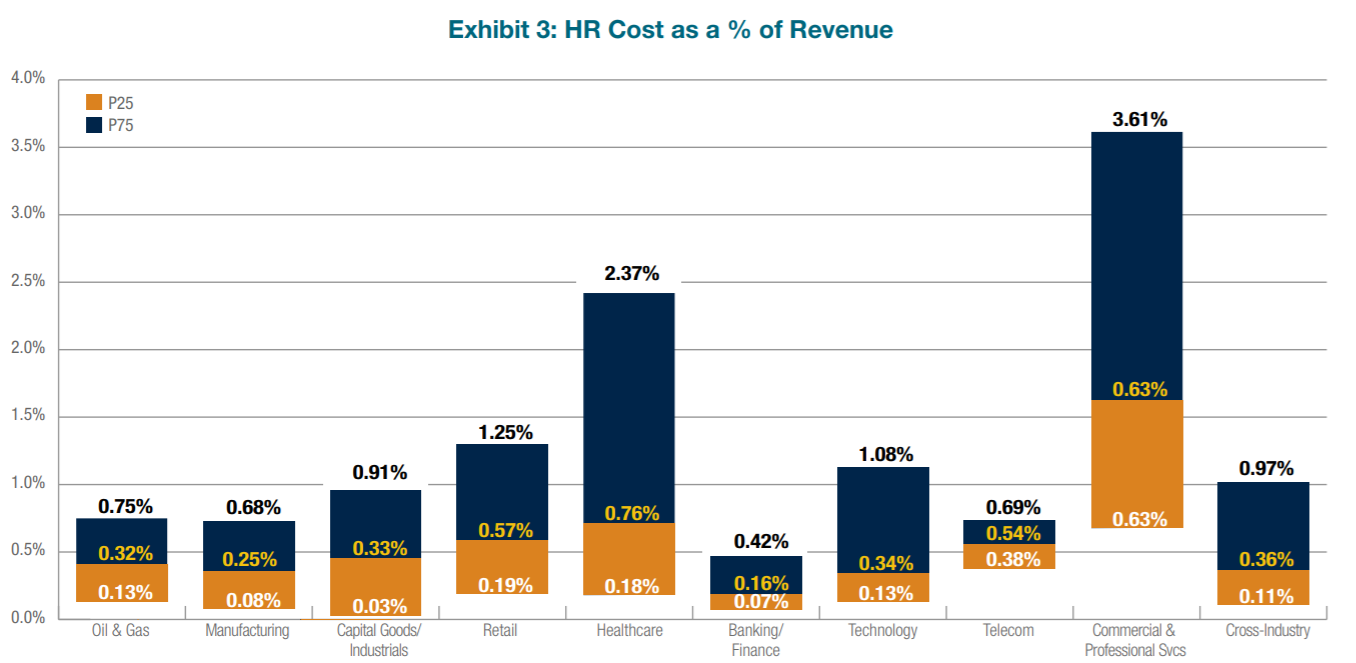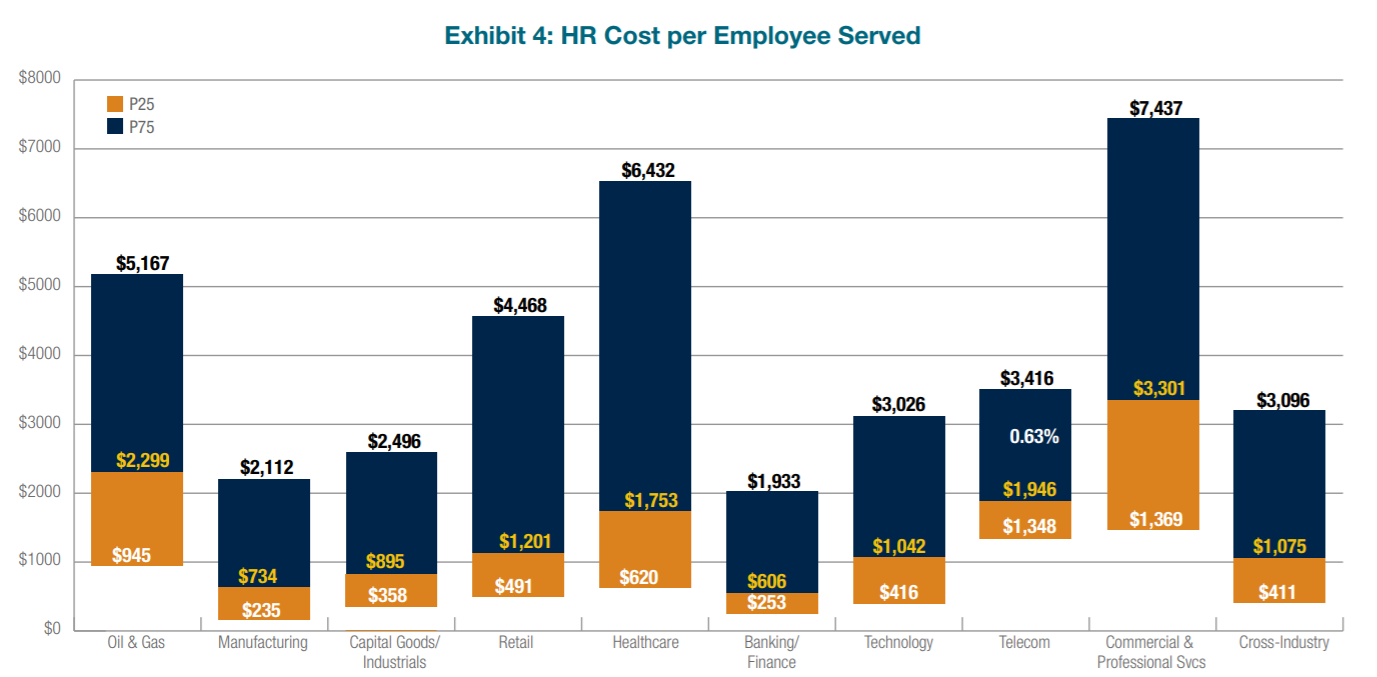Measuring the Business Value of HR
Introduction
Human resources departments have evolved over the past several decades from focusing on transactional business functions (e.g., compensation and benefits) to contributing heavily toward strategic planning and overall business efficiency through activities like talent recruitment, retention and development. As industries and work processes become more driven by technology and innovation, competition for top talent is becoming steeper, as new employment standards and regulations emerge. Businesses are required to appropriately invest in HR to remain competitive and compliant. This begs the question – how much should a business spend on the HR function? cost of an HR function is a variable of several factors – industry, number of employees, overall business objectives, etc, This article explores how and why HR evolved over the last century, what transactional and strategic functions are covered by HR and how to benchmark and evaluate HR costs.
How and Why has HR Evolved?
During the industrial revolution and through the 20th century, when companies relied on manual, labor-intensive processes, HR departments emerged to manage employee welfare, compensation and compliance with new labor laws and guidelines. Today, as technological advancements automate traditionally manual processes, industries are becoming more knowledge-based, making the identification and retention of top talent critical for business success.
Due to this shift in organizational requirements, HR departments are now charged with monitoring employee retention, training and development in addition to fulfilling traditional work processes such as compensation / benefits and compliance. By reducing turnover, growing in-house capabilities and building a steady pipeline of talent to meet projected needs, HR departments can help improve corporate performance while also creating a competitive advantage.

What Functions Are Covered by HR?
HR processes can be broadly categorized into transactional activities and strategic functions, which align closely with overall firm objectives and performance (Exhibit 2).

How Can You Evaluate HR Costs?
While HR departments, like other G&A departments, deliver important transactional and strategic support, there is some debate about the best way to evaluate associated costs. Measuring costs as a percentage of revenue is a common benchmarking method for other G&A functions and total SG&A. However, using percentage of revenue to evaluate HR can be misleading because the number of employees served is not a factor.
For example, some industries have disproportionately high revenues relative to the number of employees required to conduct business. Benchmarking HR costs as a percentage of revenue in these industries could result in a recommendation to overstaff the HR department. As an alternative, evaluating HR costs per employee served may be the more reliable method.
Exhibits 3 and 4 show a comparison of the two benchmarking methods – cost as a percentage of revenue and cost per employee served – for several industry sectors. The oil and gas industry is a good example of the possible variance described above. As a percentage of revenue, HR costs for the oil and gas industry appear relatively low, with a median of 0.32 percent which is 0.04 percentage points below the cross-industry median of 0.36 percent. However, when measured as cost per employee served, HR costs in the oil and gas industry are among the highest with a median of $2,299 per employee served, more than two times the cross-industry median of $1,075 per employee served.


Exhibit 4: HR Cost per Employee Served
HR costs generally account for 4 and 5 percent of total SG&A costs. As a typical “rule of thumb,” there is a $70 million SG&A savings opportunity for every $1 billion in revenue a company earns. Meaning, a billion-dollar company has a potential savings opportunity of $2.8 - $3.5 million within the HR function alone.
Whether choosing to evaluate functional costs by revenue, employees served or other normalizing factors, A&M has the proprietary tools to help you perform rapid benchmark assessments. Through a membership with the American Productivity and Quality Center (APQC), A&M can deliver even deeper diagnostics of HR and other SG&A functions. This toolkit of performance metrics can help you gauge the overall health of your business and pinpoint your greatest opportunities for improvement.




